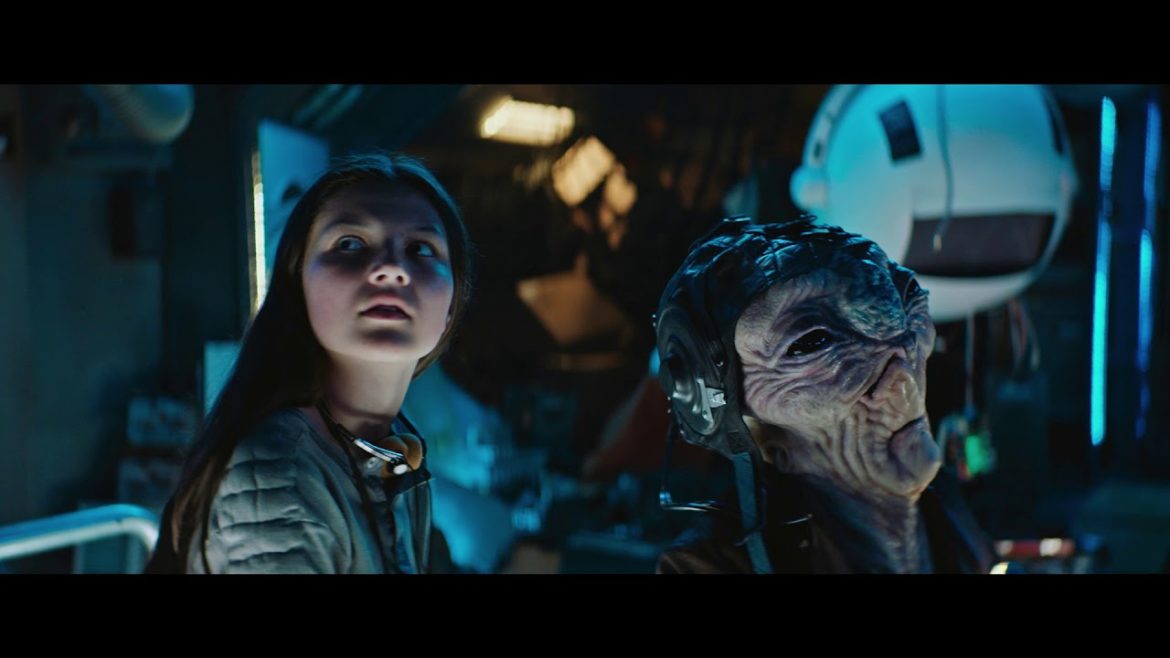TL;DR
Discover "Alone in Space," a surprisingly Swedish sci-fi adventure about two siblings on a generational ship heading to a new planet. When their journey is interrupted by a mysterious crash, they realize they might not be alone after all. While the film suffers from pacing issues and underdeveloped alien characters due to its ambitious narrative fitting a tight runtime, it shines with strong lead performances from Ella Rae Rapport and Dante Fleischanderl, impressive visual effects, and a captivating retro spaceship design. It's a family-friendly sci-fi flick with a unique charm, hinting at great potential for its trilogy. Want to see if this Swedish export is worth your voyage? Read the full review!
The phrase “Swedish sci-fi” is not often heard, but today we have exactly that: a Swedish science fiction film complete with spaceships, laser guns, and extraterrestrial creatures, containing all the elements required for an epic space adventure.
Set in the near future, Earth’s resources are depleted, necessitating a planet-wide evacuation. Siblings Gladys (Ella Rae Rapport) and Keaton (Dante Fleischanderl) are the sole passengers aboard the massive spaceship Svea XVI, destined for the planet Vial, their future home. Keaton has only ever known life aboard the ship, while Gladys retains memories of Earth and their mother, Speedy (Aliette Opheim). Speedy is absent from the ship, the reason for which is initially mysterious but gradually becomes clearer as the journey progresses. Each morning, Keaton requests that the onboard Japanese computer enumerate the passengers, receiving the same answer: two. One day, Svea XVI experiences a collision, and the children soon realize they are no longer alone; a third presence exists on the ship. Could it be Speedy’s return, or is it something else entirely?
Upon receiving notification about Alone in Space, the initial assumption was that it would be a dubbed American film. Reviewing the poster and production stills, it was difficult to believe that this was a Swedish production. However, it is indeed Swedish.
Let’s begin with the criticisms before moving on to the film’s strengths. The film is based on the play Vial by Henrik Ståhl, who also portrayed the space creature Vojajer in the play. The original play ran for one hour, while the film is 83 minutes. The narrative attempts to convey a very ambitious story within that limited time. Vojajer’s introduction occurs relatively late in the film, which causes the interactions with the children and the ensuing mission to feel rushed, hindering the audience’s ability to develop empathy for Vojajer. E.T. provides a good example of the “alien-meets-child” trope, allowing ample time for the children and viewers to forge an emotional bond before the conflict escalates.
Vojajer isn’t the only alien encountered on the ship; two more less-than-attractive creatures make an appearance. A significant issue compared to Henrik Ståhl’s portrayal is the lack of attention given to their movement. It quickly becomes apparent that the creatures are simply actors in masks who lack experience acting in such costumes.
The film stretches its limited plot in areas that negatively impact the pacing. Speedy’s motivations are also questionable; however, to avoid spoilers, I won’t delve further, even though certain elements proved incredibly distracting.
With the critiques addressed, let’s explore the film’s positive aspects:
Ella Rae Rappaport delivers a strong performance as Gladys, effectively portraying the adult themes her character confronts. She adeptly balances these elements and carries the film’s heavier emotional weight as she assumes the role of both sister and mother.
Dante Fleischanderl’s portrayal of Keaton, despite his young age, is surprisingly nuanced. However, some of his dialogue is difficult to discern and occasionally too sophisticated. His initial reluctance toward Vojajer is palpable and hints at darker undertones.
Henrik Ståhl reprises his role as the space traveler Vojajer, who collides with Svea XVI. Encased in a substantial amount of latex and servo mechanisms, he delivers a compelling character. Vojajer’s appearance, makeup, and special effects are comparable to those found in space films with significantly larger budgets. As previously mentioned, the film’s brevity is a drawback, preventing a more thorough exploration of Vojajer’s character. However, given that this is the first installment in a trilogy, further insights into the trio and the circumstances surrounding Speedy’s disappearance are anticipated.
The visual effects are exceptionally well-executed, and the ship’s design exhibits a captivating retro aesthetic. Homages to other science fiction films are present throughout. While the ship is designed for 5,000 passengers, the film’s limited budget is evident when depicting the vast, unused areas. Repeated camera angles are employed when showcasing the ship’s larger spaces to minimize the need for matte paintings and exterior shots, which are used only when strictly necessary. The sound design is impressive, creating a compelling sci-fi atmosphere, and the cinematography is both stylish and atmospheric.
In conclusion, Alone in Space is a genuine science fiction film. While its budget of 20 million Swedish kronor is modest compared to, for example, Star Wars – The Last Jedi’s approximately 3 billion, it remains impressive. The film is geared towards a younger demographic than this 40+ film enthusiast, and some of the humor may not resonate with older viewers. Nevertheless, this film is recommended. It is a family film, albeit with darker undertones reminiscent of classic Disney productions. Watch it and demonstrate that Sweden produces more than just Beck, Wallander, and other surname-titled police procedurals. Highly recommended!

